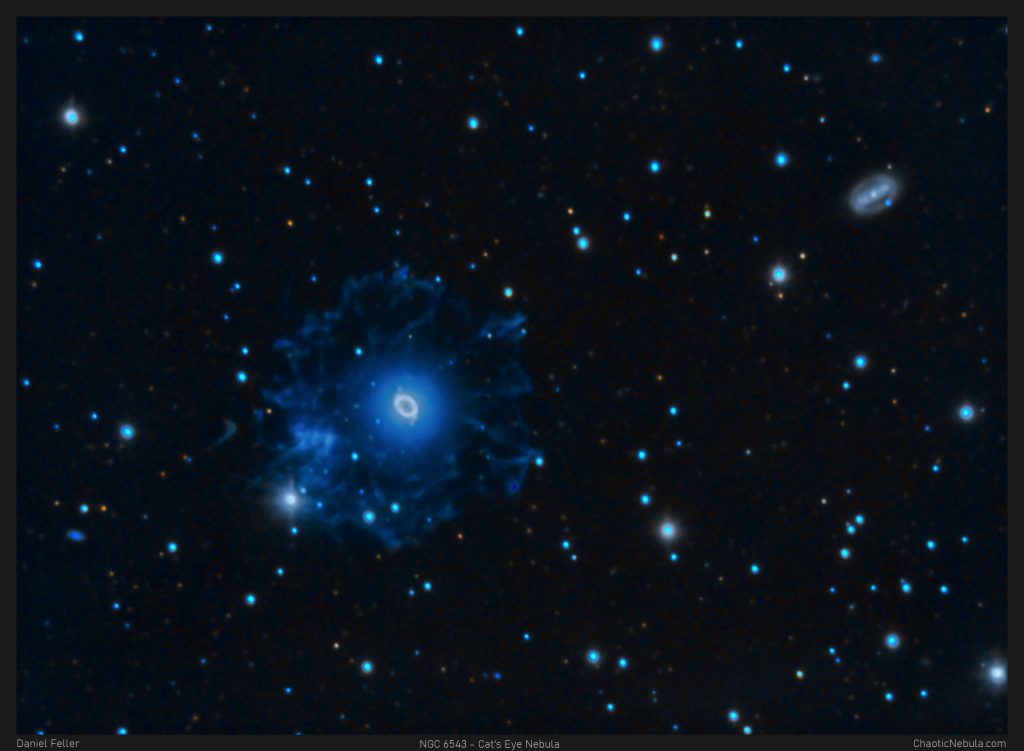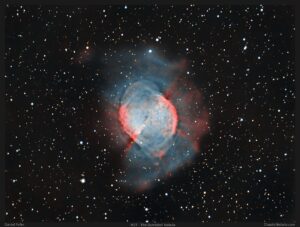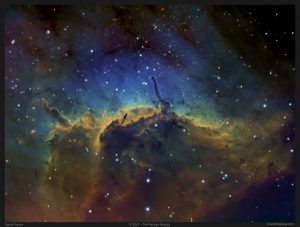The Cat’s Eye nebula is a planetary nebula in the constellation Draco. A planetary nebula is the ejected shell of a red giant star at the end of a medium sized star’s life. This particular planetary nebula is around 3,300 light years away. The small fuzzy object to the right is the barred spiral galaxy NGC 6552, which lies 350 million light years away.

Imaging Details
- Workflow: LRGB+HA
- Lum Filter: 80*180 seconds
- Lum Filter: 160*30 second
- Red Filter: 36*300 seconds
- Red Filter: 30*30 seconds
- Green Filter: 36*300 seconds
- Green Filter: 30*30 seconds
- Blue Filter: 36*300 seconds
- Blue Filter: 30*30 seconds
- Oxygen-III: 24*600 seconds
- Oxygen-III: 30*30 seconds
- Binning:
- 1×1 for 30 second exposures
- 2×2 for 300 and 600 second exposures
- Total Imaging Time: 18 hours
- Imaging Dates (14 nights):
- 5/7/2021
- 5/10/2021
- 5/11/2021
- 5/12/2021
- 5/17/2021
- 5/31/2021
- 6/7/2021
- 6/9/2021
- 6/10/2021
- 6/12/2021
- 6/29/2021
- 7/1/2021
- 7/2/2021
- 7/3/2021
NGC 6543 Imaging Notes
Because The Cat’s Eye Nebula is a planetary nebula, it has a very strong OIII signal, which is why the final image if very blue.
The Cat’s Eye Nebula, is one of the first nebula’s I’ve imaged that has a huge dynamic range. This means the core of the nebula is extremely bright. When using LRGB and narrowband filters at my typical exposure times (180, 300 and 600 seconds), the core was completely saturated, simply leaving me with bright blob. I had to take additional images through all filters with a much shorter exposure time so I could get the detail within the core of the nebula.
Some quick tips about this nebula
- To integrate my short and long exposure images, I had to integrate HDR Composition and HDR Multiscale Transformation into my PixInsight workflow.
- I’m still running my telescope at F10. Although slow, it did allow me a fairly detailed view of the nebula and core.
- The OIII filter integration turned the entire nebula very blue. I need to re-work the narrowband integration parameters to maintain some of the original color and possible include a Hydrogen-Alpha filter


